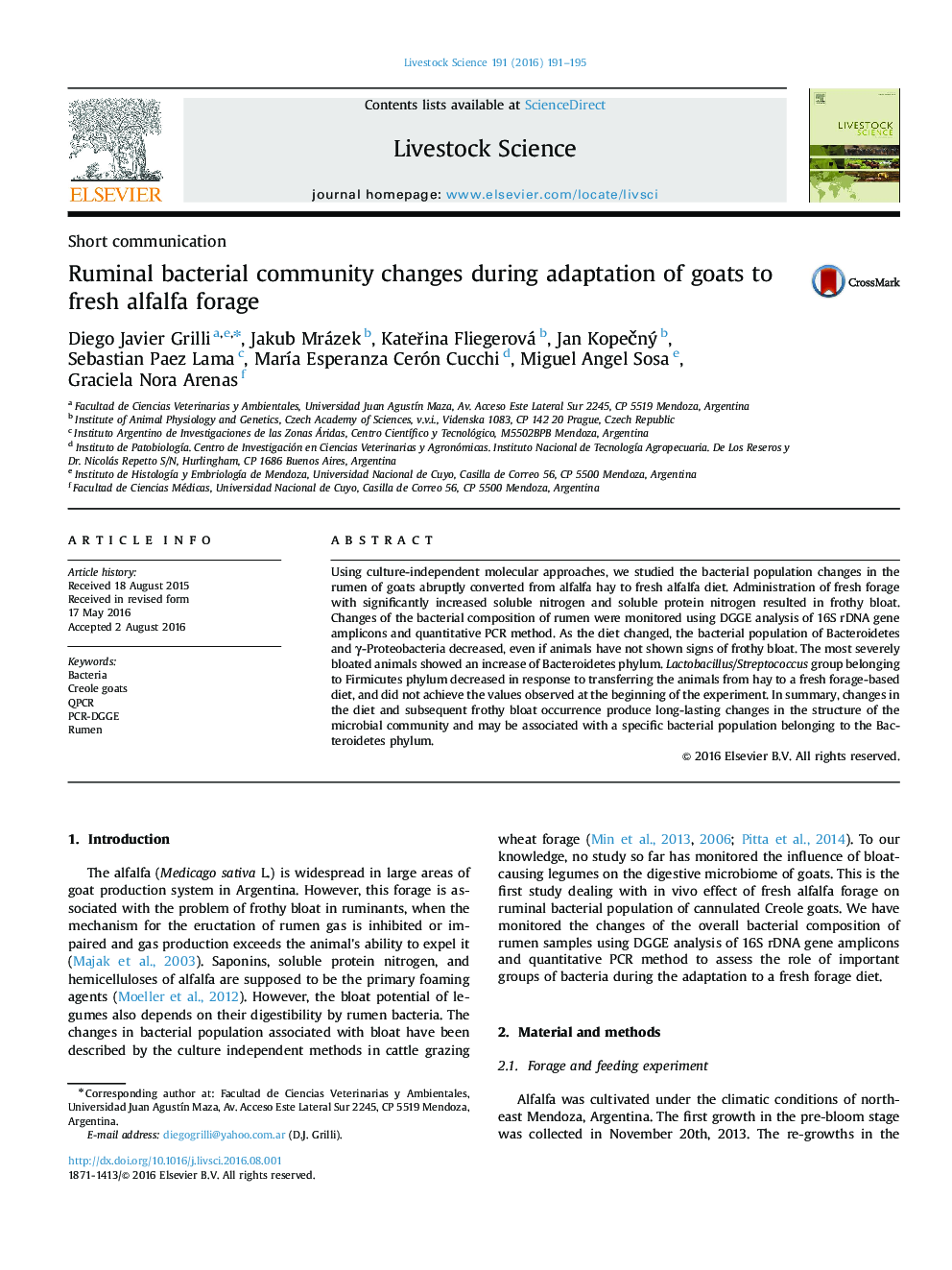| Article ID | Journal | Published Year | Pages | File Type |
|---|---|---|---|---|
| 5789926 | Livestock Science | 2016 | 5 Pages |
Abstract
Using culture-independent molecular approaches, we studied the bacterial population changes in the rumen of goats abruptly converted from alfalfa hay to fresh alfalfa diet. Administration of fresh forage with significantly increased soluble nitrogen and soluble protein nitrogen resulted in frothy bloat. Changes of the bacterial composition of rumen were monitored using DGGE analysis of 16S rDNA gene amplicons and quantitative PCR method. As the diet changed, the bacterial population of Bacteroidetes and γ-Proteobacteria decreased, even if animals have not shown signs of frothy bloat. The most severely bloated animals showed an increase of Bacteroidetes phylum. Lactobacillus/Streptococcus group belonging to Firmicutes phylum decreased in response to transferring the animals from hay to a fresh forage-based diet, and did not achieve the values observed at the beginning of the experiment. In summary, changes in the diet and subsequent frothy bloat occurrence produce long-lasting changes in the structure of the microbial community and may be associated with a specific bacterial population belonging to the Bacteroidetes phylum.
Related Topics
Life Sciences
Agricultural and Biological Sciences
Animal Science and Zoology
Authors
Diego Javier Grilli, Jakub Mrázek, KateÅina Fliegerová, Jan KopeÄný, Sebastian Paez Lama, MarÃa Esperanza Cerón Cucchi, Miguel Angel Sosa, Graciela Nora Arenas,
